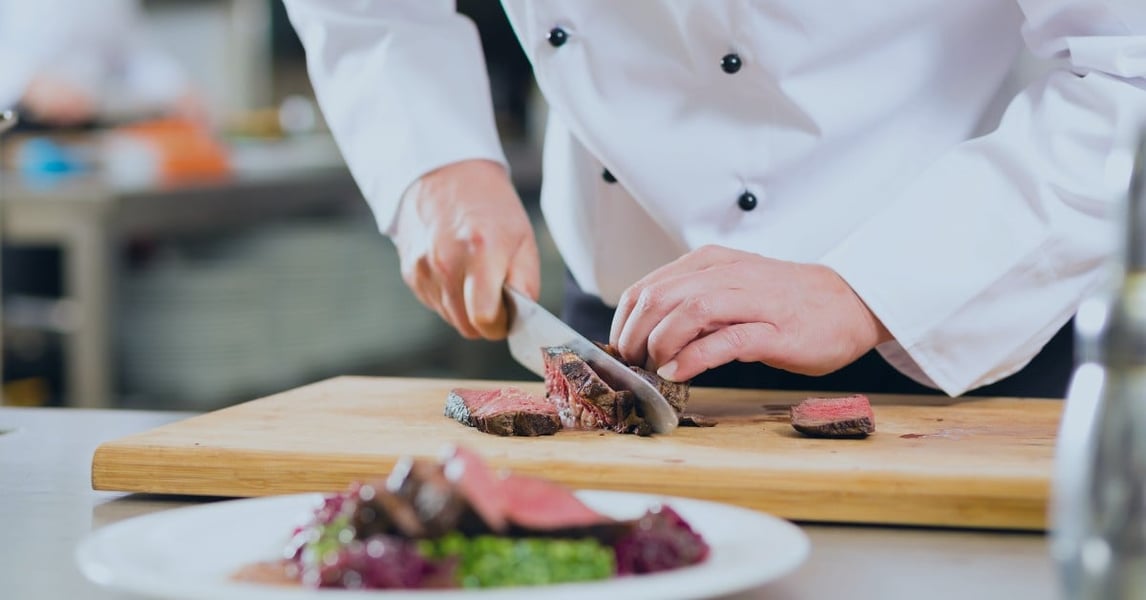If you want your restaurant to be a success in this highly-competitive market, you will need to focus on processes that improve your profit margins and grow your bottom line. This means creating a menu that is profitable, reducing food and bar waste, as well as properly managing your orders and controlling the amount of inventory you hold at any one time.
To do this, your business needs to implement a restaurant inventory management process that gives you complete visibility and control over your inventory - and the insights needed for improved profitability.
By using restaurant inventory to accurately track your stock and usage of each ingredient used in your restaurant, you can gain insights into how much food (or drink) you are wasting, what your optimal ordering amount is, what your favourite customer dishes are and where you might be losing money.
Your inventory is your company’s investment into the success of the restaurant. The better you can manage that inventory, and the more insights you can gain from it, the more likely you are to be successful in the future.
With that in mind, in this blog we’ve listed the top 10 restaurant inventory tips to help you implement an inventory management strategy that drives results.
- Conduct inventory counts on a consistent schedule
Conducting your inventory counts on a consistent schedule is a crucial aspect of gaining visibility into how quickly you are using food, drink and other ingredients. To build a consistent schedule, you’ll need to decide:
- How frequently you will conduct inventory counts, whether it be weekly or monthly.
- What day of the week you will conduct inventory counts.
- What time you will conduct inventory counts, whether it be before you open or after you close.
Inventory counts should be performed at the same time on the same day every week or month to ensure counts are both consistent and accurate.
- Use the same staff to conduct inventory counts
Switching up the employees that conduct your restaurant’s inventory counts can be confusing and inefficient. It’s far more effective to use the same staff members to do inventory. When restaurants use the same employees to track and count inventory, it tends to be more efficient and employees gain the skills and knowledge they need to spot trends and inconsistencies.
- Use technology to gain visibility of your restaurant inventory
To gain visibility and control of their restaurant inventory, as well as automate the processes associated with inventory management, it’s critical that today’s restaurants implement restaurant inventory software into their processes.
The use of restaurant inventory management software eliminates the time-consuming and error-prone nature of manual inventory management. By integrating with your POS system, restaurant inventory software will give you insights that help you reduce waste, improve ordering processes, increase profit margins and better meet your customers’ expectations with new menu additions.

- Follow the first in, first out (FIFO) inventory method
The inventory of a restaurant is largely made up of perishable goods. For that reason, it’s only logical that successful restaurants will use the first in, first out (FIFO) inventory method in which the oldest food on your shelves will be used before the newer ones. This helps you build a consistent inventory usage process, and can help your business dramatically reduce its food waste.
To make this easier, position the oldest items in your inventory at the front of your storage areas so that kitchen employees are more likely to use them first.
- Use inventory data to guide future ordering decisions
In a restaurant, there’s a fine balance between underordering and overordering stock. Underordering typically leads to decreased customer satisfaction, while overordering can significantly impact your restaurant’s profit margins. That’s why you need data to understand how much of each ingredient you need to order, with a small buffer in mind for increased demand.
Inventory data will help your restaurant find its period automatic replacement (PAR) level for each item, which is the minimum (and optimal) level of any given inventory item that your business should have on-hand at all times. This ensures you neither run out of a product, nor overstock it - allowing you to perfect your ordering process.
- Make sure your inventory is well-organized
Inventory counts are way more difficult than they need to be when your stock isn’t organized in an efficient manner. Using categories to separate your items and ensuring each product has a place makes it both significantly easier for your staff members to conduct inventory counts and makes your entire kitchen more efficient.
- Keep track of food waste
When you overserve on an order, you throw away rotten food, you replace an order because a server misheard the customer or you drop a dish on the way to a table, you are chipping away at your profits. Every piece of wasted inventory will take a little out of your restaurant’s overall profit margins.
By calculating your inventory variance ( the actual amount of product you have used vs the amount of product you have sold), will give your restaurant insight into wastage and where you might be listing profit margins.
- Regularly update menu prices
There are a huge amount of variables that have to be considered when setting your restaurant’s menu prices, and these fluctuate on a fairly regular basis. You’ll need to think about your company’s overheads, inventory prices and how well particular dishes are selling.
Building a menu and then leaving prices the same for years on end is only going to result in the continual loss of profit margins. Make sure to review your menu prices on a regular basis to make sure that your profitability isn’t taking a hit.
- Mitigate employee theft
Just like food waste, inventory theft can hit your profit margins. While most employees are honest, it’s an unfortunate reality in the hospitality industry that businesses will be hit by employee theft at some point. You can use the visibility and insights you get from your inventory data to limit, and stop, the impact of employee theft.
While this blog is focused on employee theft specifically when it comes to bars, How Bar Inventory Management can Help Prevent Bar Theft, it will give your restaurant a better idea of how to use inventory data to flag discrepancies and stop theft.
- Get inventory expert help if required
Successful inventory is incredibly important to the overall profitability of your restaurant, but that doesn’t mean your business has the time or resources to perform those processes properly. In that case, an inventory management system alone might not be enough. And definitely don't just rely on an inventory sheet.
For even better results, restaurants should turn to an inventory management expert that not only provides an innovative restaurant inventory management system, but also expert help.
Here at Sculpture Hospitality, we combine our restaurant inventory management software with a team of local industry experts who can help you not only implement it successfully but also set it up to give your business the insights and metrics that will help you grow.
Interested in learning more? Request a consultation with the Sculpture Hospitality team today.





.png)





